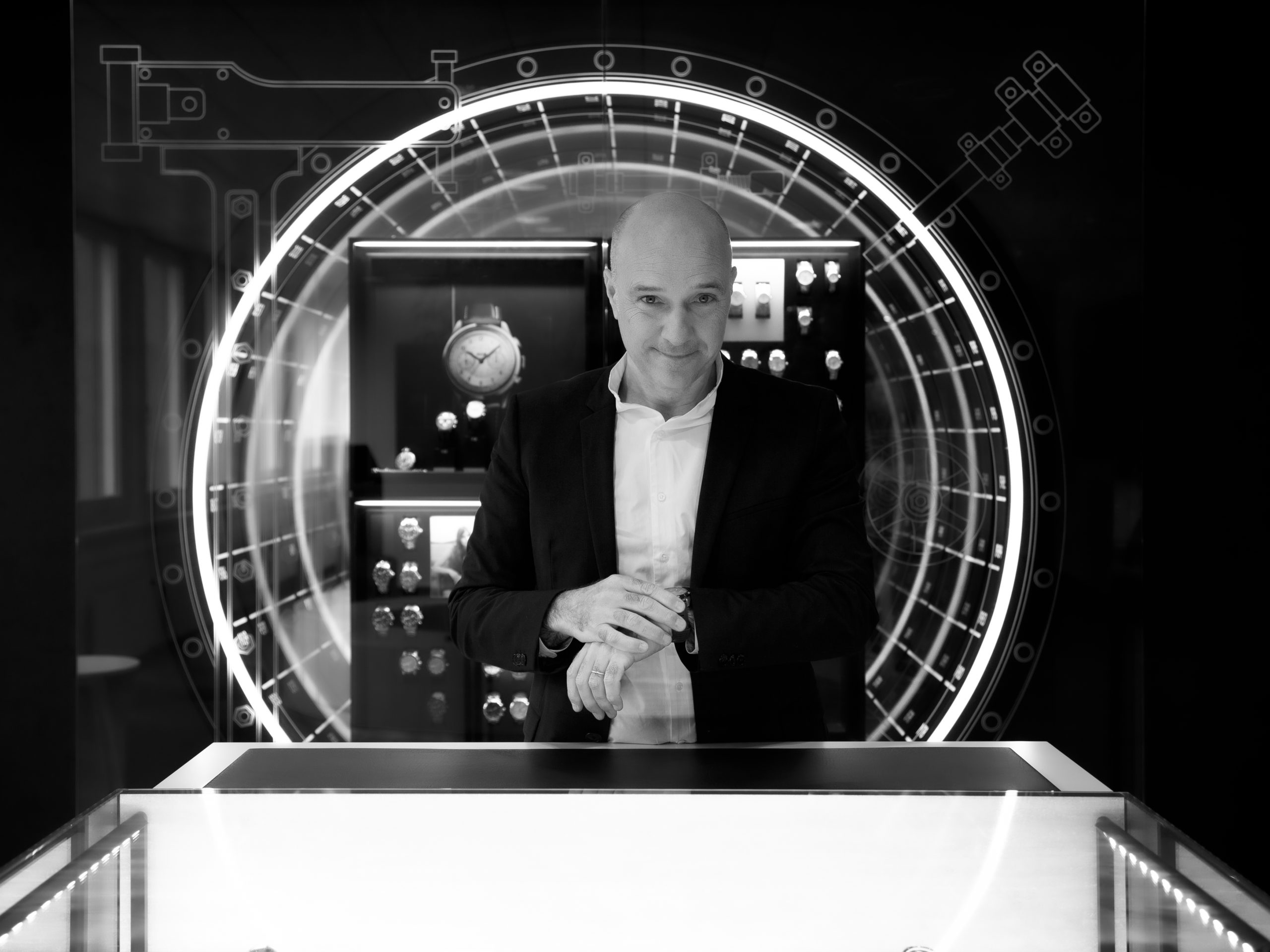
When you love watchmaking cities, a visit to Le Locle is always a treat. And if you’re heading to its most prominent watch company, Tissot, to meet the CEO, Sylvain Dolla, well, you know it will be memorable. Sylvain Dolla, previously at the helm of Hamilton before taking over Tissot in 2020, is one of those CEOs who is also the best ambassador for their brand. Approachable, elegant, fun and always very sharp, those attributes could equally describe both Tissot and the man running it.
At the Tissot headquarters, not only the impressive archives but also the architectural eras found across the different buildings convey a strong sense of history. For this interview, we sat in the original building, dating back from when the Tissot family moved from a few miles away, in 1907. Under the warm, original wooden framework, overlooking the valley, we talked about the past, present and future of the traditional Swiss brand that sells the most watches in the world.
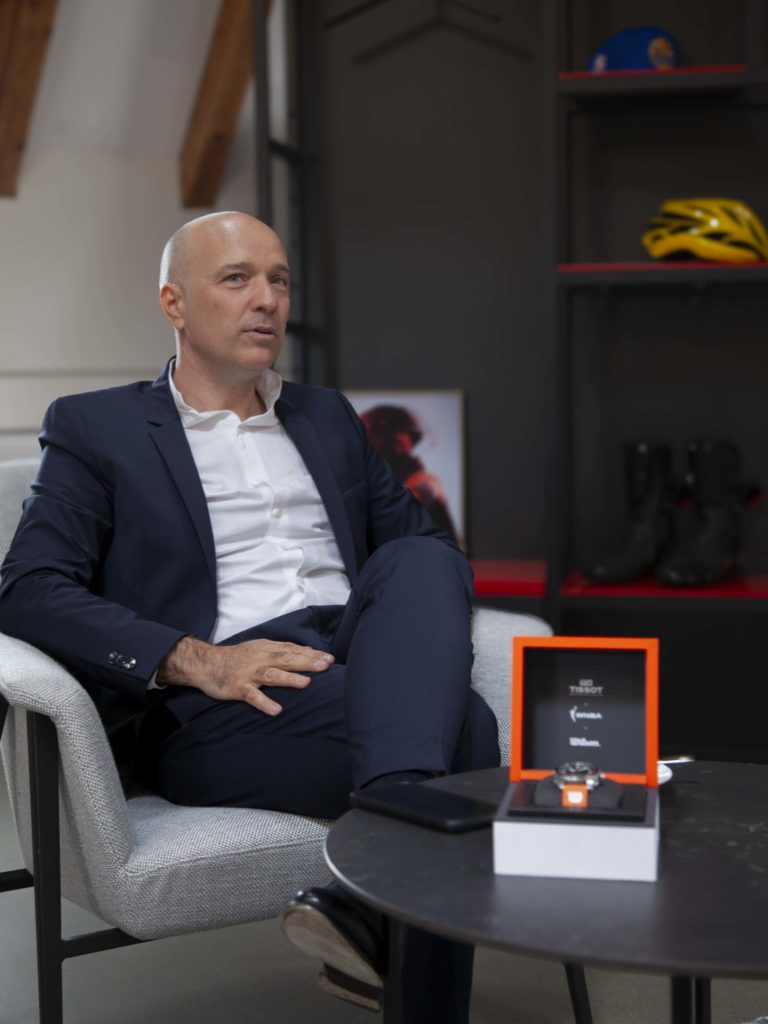
We are sitting here in Le Locle, one of Switzerland’s main watchmaking cities. Can you tell us a bit about Tissot’s history on these grounds, in this city? Will you ever move?
Le Locle represents a lot for us. It’s where we have our roots. We started here in 1853, in the Tissot family house. The company later built the site where we are sitting now, in 1907. Our production site can now feel somewhat destructed from an architectural standpoint. We added on and on, corresponding to different eras and milestones in the company history. The building gives life to this history. The Le Locle collection is one of our best sellers. Chemin des Tourelles is another iconic collection, named after the small street we are on. We recently made new investments, such as in spare parts logistics and solar energy. We have no current intention to leave!

You have been CEO of Tissot for almost four years now. What has changed the most for the company over that period?
Those four years included two years of Covid. Such a crisis necessarily changes things in a fundamental way. We needed to adapt. We took time to rework the fundamentals of the brand. We modernized our marketing campaign. We digitized not just our assets but also our culture, at every level of the company. Overall, the transformation was a revolution for us. Of course, we remain first and foremost the makers of an emotional product. But the way we work has significantly evolved.
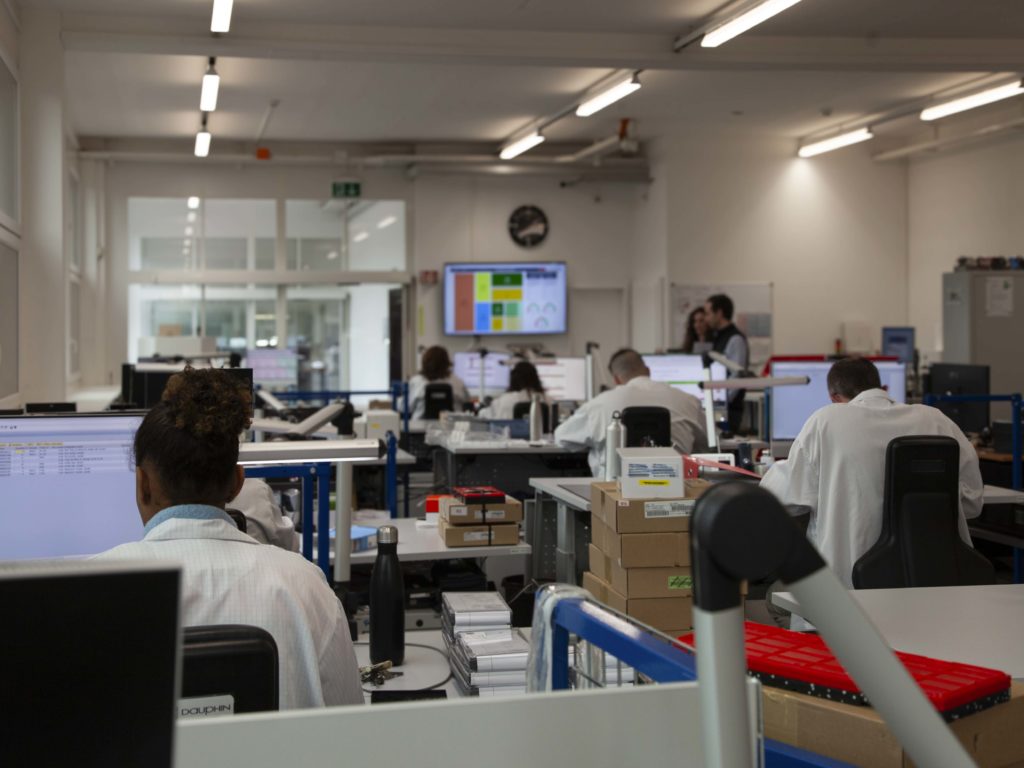
You often talk about product quality and specifically increasingly focusing on details. What does that mean in practice?
This is a passion. I love it when the product team comes and we look together at how to bring more perceived value. Our solutions need to be industrialized and be affordable, given our price point. But value can still be added, always. It can be about quality on the dial, or finishing of the case. We push ourselves, and our suppliers, to the limit. Each detail may not be noticeable on its own, but the accumulation leads to a clear improvement in perceived value. The new WNBA Seastar in front of us is a good example: sunny dial, polished and sandblasted finishing of the case, a high quality strap from the same material as Wilson game balls and anti-reflective coating on the glass. We also need to know where to stop and concentrate on the more visible and noticeable features. That is how we manage to offer such value.
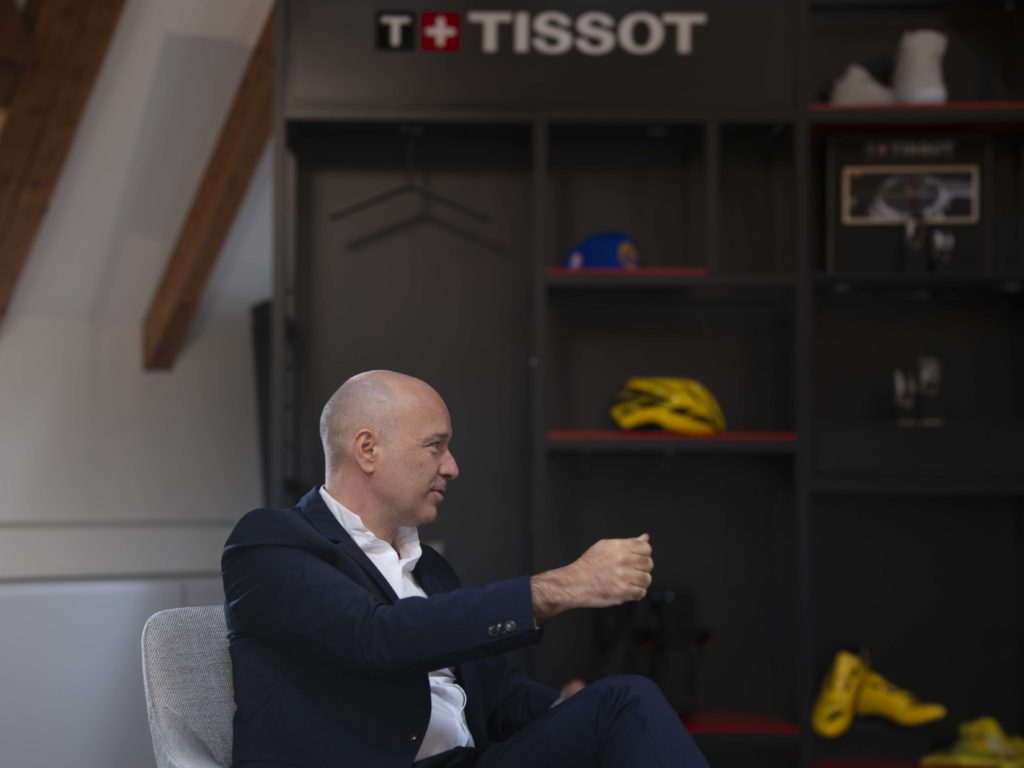
You mentioned previously that Tissot is now focusing on “the young and ambitious.” Can you tell us a bit more about this group? Is there a specific age group you are targeting? What kind of ambition are we talking about?
We have such a huge range of products, from quartz to automatic, connected and gold. The age of our customers ranges from 15 years old to forever. That is a privilege. But you cannot communicate to everyone without diluting the message. Two years ago, we conducted a deep study with IPSOS. We found a target group representing 220 million potential customers (80% of the luxury customers), aged 18 to 34 years old. A Tissot is often purchased to celebrate a milestone. Not a past achievement but a key step in life: graduation, a wedding, a significant birthday. Our campaigns are targeted at such an audience, with our tagline ‘focus forward’. Young, ambitious people who are thinking about the future.
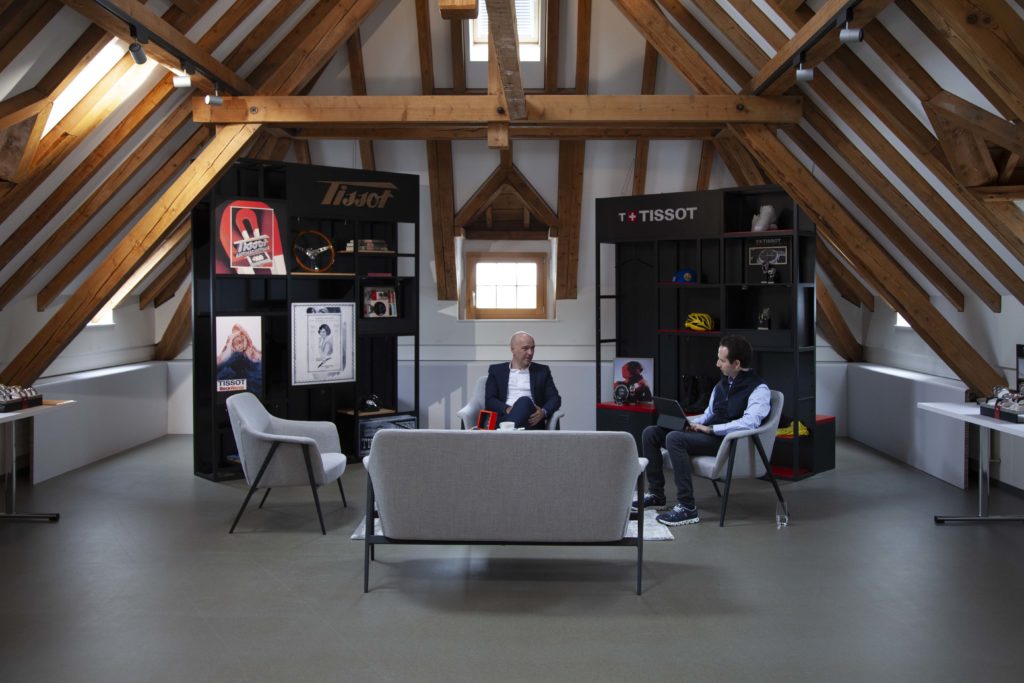
You previously stated that Tissot’s core positioning was between $300 and $1,000. But some recent models, such as the PRX Chronograph or more recently the PR516, are attracting significant attention at a price point closer to $2,000. Are those still exceptions or a bigger trend?
We are very fortunate to be in the $300 to $1200 segment, which many others have left. We have about 50% market share in that segment. Last year, we were even at 52%. It would be crazy to focus on anything else. But, yes, sometimes, we like to do something a bit different, for pleasure. A chronograph with a nice Valjoux movement will speak to enthusiasts like you or me. People who want a fantastic watch at a very reasonable price. But ultimately, the volumes of those productions are niche at the scale of Tissot.
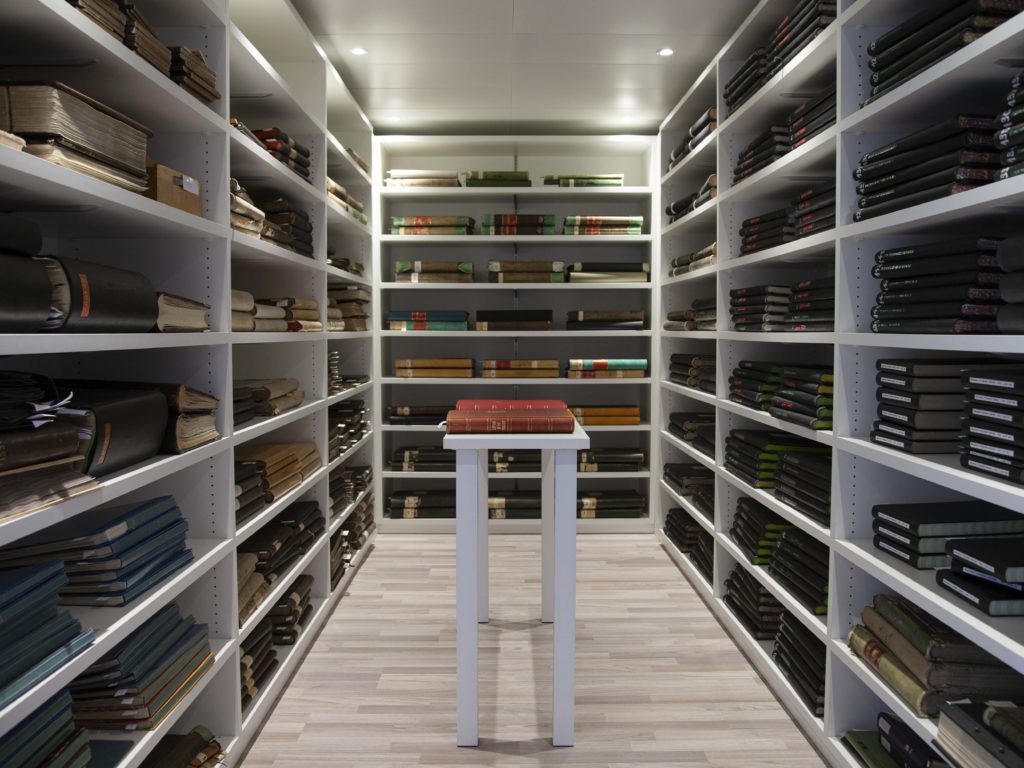
It is hard nowadays to dissociate Tissot from the PRX. What has been the impact of the collection on the sales but also the broader perception of the brand?
When I started here, despite 16 years of Swatch Group, I was like a child on Christmas day. I was so excited about the horological wealth of Tissot. Among the dormant projects that were being considered, there was the PRX. I fell in love. But I made a mistake! I told teams to be more ambitious about the PRX and produce… 12,000 pieces instead of 6,000. I could not have been further from the truth: we ended up selling hundreds of thousands. I was wrong in the best possible way!
Before the success, we were wondering how to communicate about the product. It was a snowy day at the office in Le Locle. I had listened to Daft Punk’s Giorgio by Moroder that morning, a tribute to one of the fathers of electronic music, Giovanni Giorgio. Like the watch, a throwback to the 1970s. We came up with the idea of a disco-inspired campaign. The colorful campaign, with Blondie’s music, was most welcome post Covid.
The watch attracted a new audience for us. Many in their twenties. Collectors, also, who found the style of much more high end watches without hurting the wallet. The quality is quite exceptional and the bracelet incredibly comfortable. It is very efficient to produce. But we are cautious about not flooding the market with too many variations. The identity and value must be preserved.

Tissot’s motto is “innovators by tradition.” You are one of the very few accessible watch brands to have a strong line of pocket watches. What does that category represent for you?
We are lucky to be such a generalist brand. When I arrived, I asked: why do we make gold watches? What about pocket watches? Then, I saw the volumes and understood! We are fortunate to be the traditional Swiss brand shipping the highest volume. That means that each line has significant volume in and of itself. As a smaller brand, you cannot afford such diversity. The pocket watch is not only successful today among our products but I’m personally convinced it will make a comeback, maybe as a fashion statement. Our pocket watches are assembled here in Le Locle and require a specific savoir-faire.
You recently launched two Seastar Wilson WNBA models. Women’s basketball is receiving a lot of attention in the US at the moment. Is this an area where you plan to invest further in the future?
We have been supporting and investing in women’s sports for a very long time. In basketball, not just WNBA but also FIBA, for over 15 years. From the beginning, we equally invested in women and men. On the Tour de France, for instance, we supported the women’s competition as soon as we were given the opportunity. This is part of our DNA. We will actually soon be announcing a WNBA star as a new ambassador!
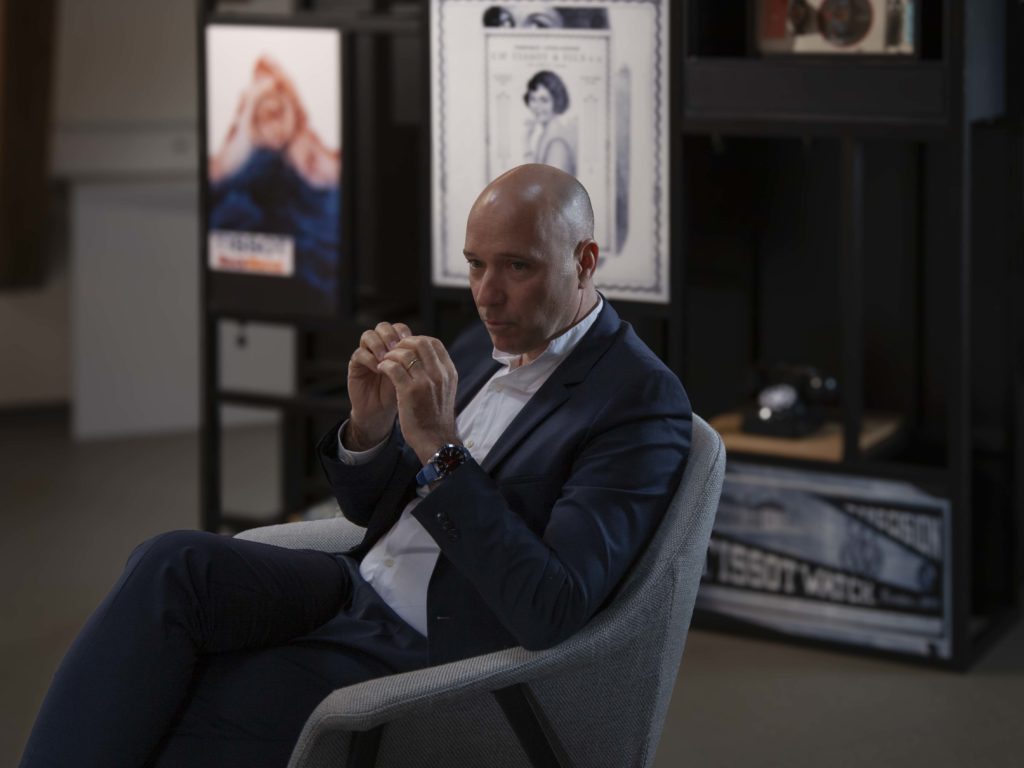
How is your retail strategy evolving? Your number of branded stores is significant, with some new flagships, but still relatively small compared to your retail network. What is the trend of online versus physical sales?
Our strategy is very clear. We built our success with multi-brand retailers. 11,000 points of sales across the world! We are often their top revenue generator. Beyond sales, they also bring us visibility. They are perhaps even our biggest asset in that respect. Visibility is crucial when you aim for significant volume.
E-commerce is very important also. Not just our corporate site but also the e-commerce of our multi-brand retailers. We need to set the standard, and equip them with the right assets. We invest a lot in that.
Our number of corporate boutiques, 213, is very small in proportion. But they are strategic. On the Champs-Elysées, we invested 20 million euros for our flagship. We just revamped the Bahnhofstrasse boutique in Zurich and are now open in Amsterdam and Brussels, in high profile locations.
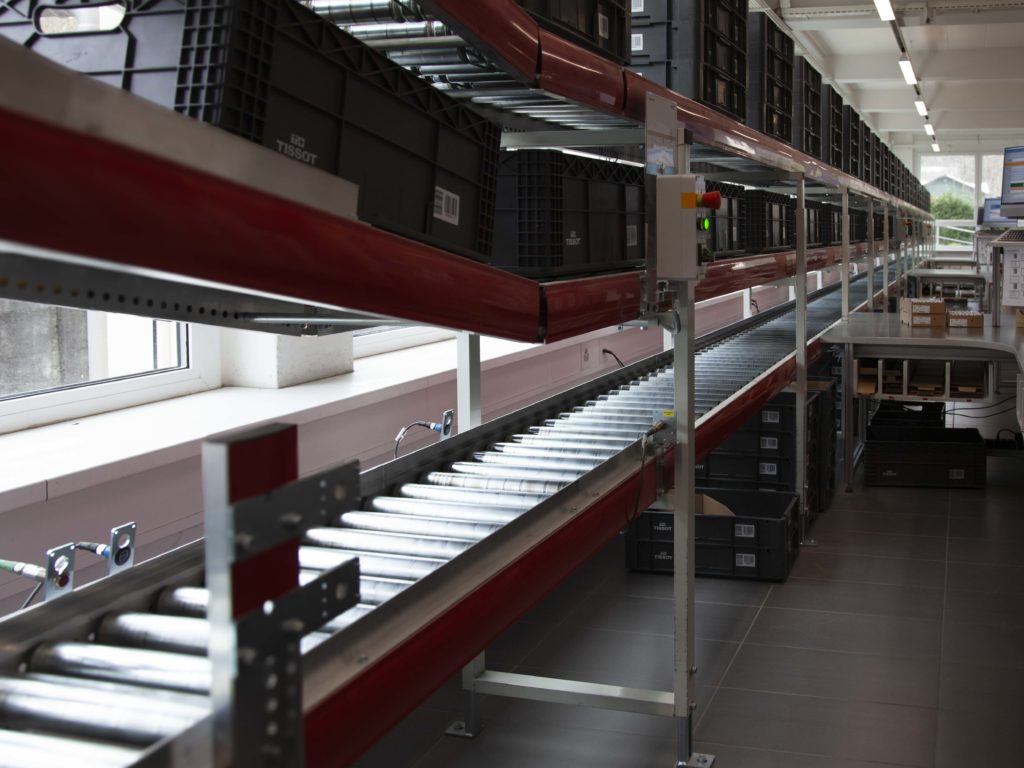
It is a known fact that China is Tissot’s largest market. How are you seeing it develop? What are the dynamics in other parts of the world for Tissot?
China is by far our number one market and we are further reinforcing our position. As we all know, luxury consumption has slowed down in China recently. In this context of macro-economic challenges, consumers tend to make safer choices. And Tissot is the safe choice for all watches under 10,000 RMB (note: about 1285 CHF). We are not yet back to pre-Covid volumes but our market share is increasing. We have strong ambassadors and boutiques.
In the rest of the world, Europe is doing well. So is the US. We know we won’t have the same growth as over the past 3 years — 25% annual growth is not sustainable — but the trajectory is positive. In the rest of Asia, it depends. Singapore has been harder lately. Korea, on the other hand, is booming. Japan is also performing very well, we are investing a lot there, including with the new Shinsaibashi boutique in Osaka and the Ginza boutique in Tokyo. India is also performing exceptionally well.
What is the biggest challenge, and opportunity, you see for Tissot between now and the end of the decade?
When you are the leader in a segment, the biggest challenge is staying at the top. And ideally, gaining market share. Of course, when your market share is already at 52%, this becomes increasingly harder. The key is to find good innovations, and we have many in the pipe. Innovations on movement, on solar. We strongly believe in the potential of solar, when done right. The investments we make are always very significant because we have an industrial approach, with scale in mind. We want to master what we do. That means making the right decisions today, and for the next two years, to have by 2030 the products that will bring in new customers and consolidate existing ones.
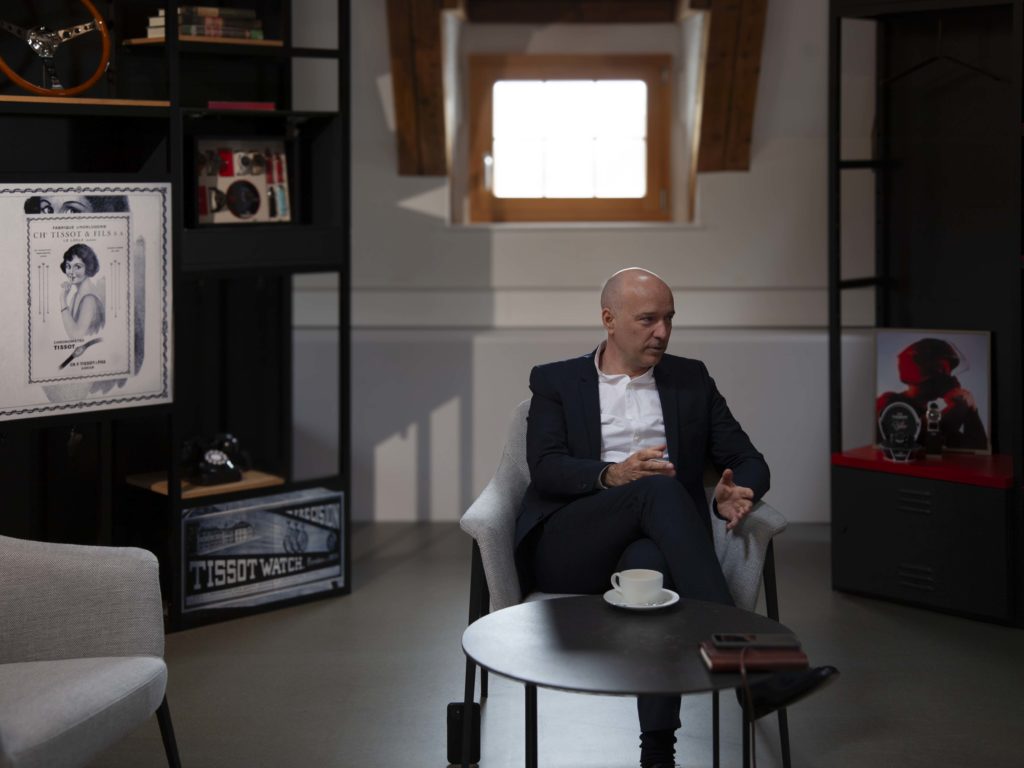
Can you tell us about your other prerogatives within the Swatch Group? How do you balance your time, and energy, between Tissot and your other responsibilities?
As a Swatch Group employee and member of management, you have your main job, and then you get to do other ones. But what is key is that those additional roles feed into your primary role. For instance, I am on the board of CSEM, who have 600 engineers working on cutting edge innovation. That gives me more work, but it is both fascinating and nourishing. You learn about different cultures, other ways of doing things. I am responsible for the Swatch Group in France, Belgium, the Netherlands and Greece: when I visit those countries, my days are not as operational as when I am running Tissot. But what I see helps me better understand the group, and other segments, such as high-end luxury. All of that inspires me and, ultimately, makes me better at my most important job, as CEO of Tissot.
Photography by Jeanne Grouet for Time Files


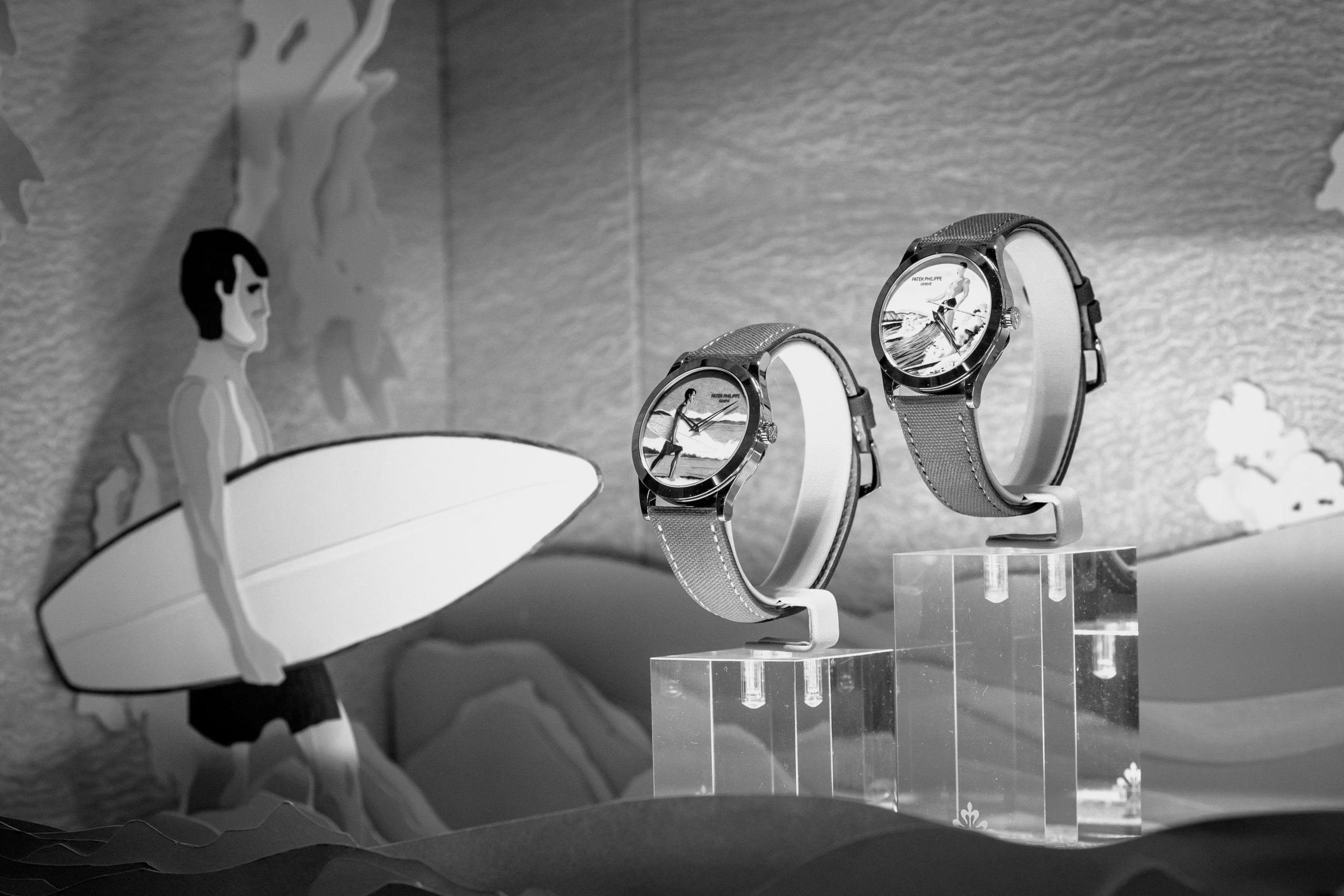
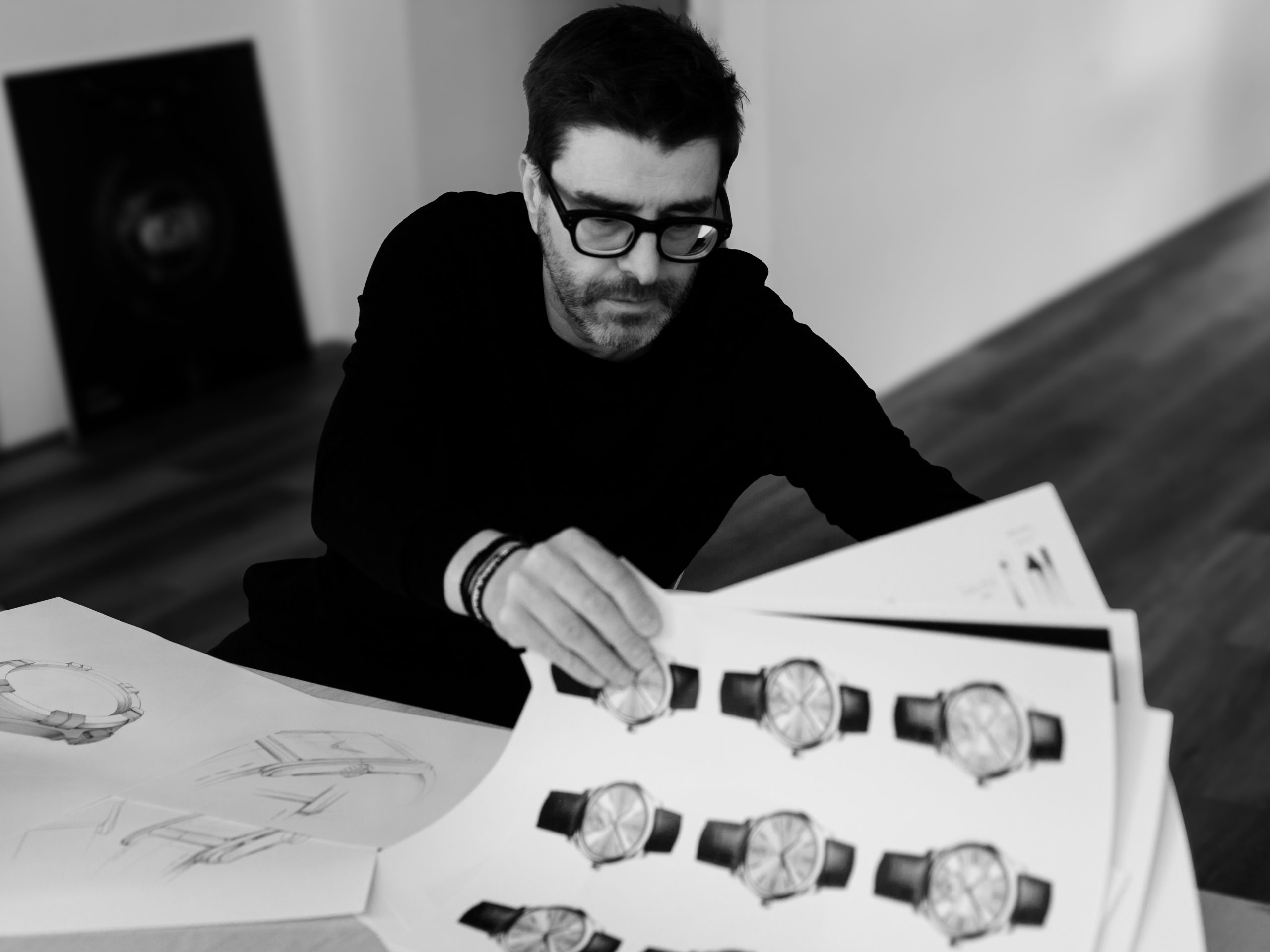
Super enjoyable and informative interview!
It’s great when such a seasoned leader talks so openly about the business. He shares insider knowledge, almost ‘tips and tricks’ but without ruining the magic. Makes me appreciate even more my Tissot watches.